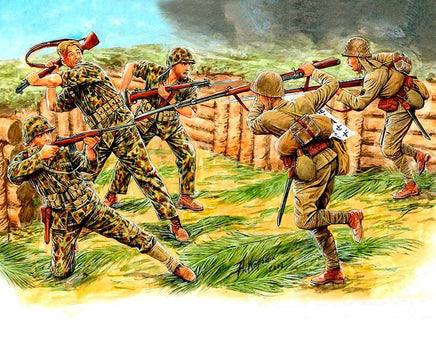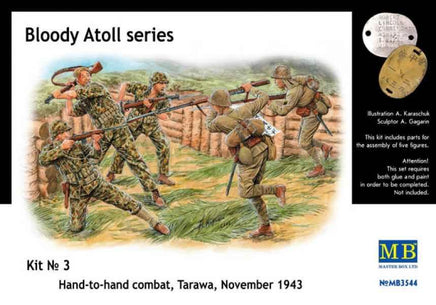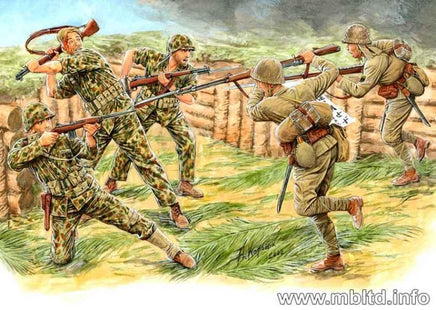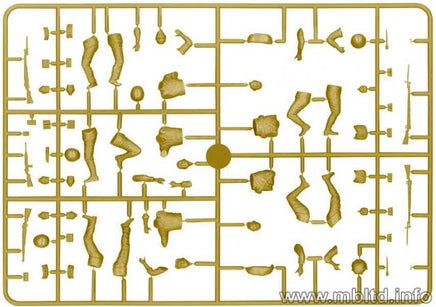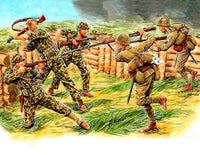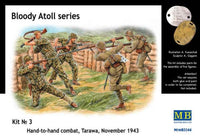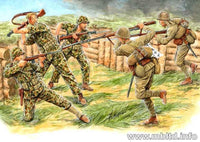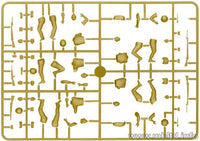The Battle of Tarawa was fought during the battles for the Gilbert Islands, which were fought as part of the operation code-named Galvanic. The battle itself lasted from November 20 to 23, 1943. Throughout the battle, on the American side, 53,000 soldiers, sailors, and airmen were directly or indirectly involved, of which the land component was 18,000 men. About 4,500 people fought on the Japanese side, of whom about 2,000 were construction workers. The main goal of the fighting in the Gilbert Islands, including the Battle of Tarawa, was the pursuit of the capture of much more favorable bases by the Americans preparing for further landing operations in the Central and South Pacific. Despite careful planning of the operation by the American side, it did not avoid a few mistakes, which led to relatively high losses among their own troops by the advancing forces. Among the errors, it is possible to mention, first of all, poorly working communication and insufficient recognition of Japanese positions. Despite the fact that the Americans won the battle, they suffered losses estimated at around 1,700 killed and around 2,100 wounded. On the other hand, the Japanese side lost its entire garrison of approximately. 4,500 men. It is worth adding that the operation on the American side was supported by significant naval forces consisting of, among others, 5 escort aircraft carriers, 3 battleships, or 2 heavy cruisers.
Already after the first experiences of fighting in North Africa at the turn of 1942–1943, the US Army changed the position of the American infantry division. From 1943 onwards, each infantry division had three full-time infantry regiments, each composed of three infantry battalions. In addition, the infantry regiment also included other units, for example, an anti-tank company, an artillery company, or a staff company. In total, the US Army's infantry regiment numbered approximately 3,100 soldiers. It should also be remembered that the division also included a strong artillery component consisting of four artillery battalions: 3 light and 1 medium, most often armed with 105 and 155 mm howitzers. There was also, among others, an engineering battalion, a repair company, a reconnaissance unit, and a Military Police platoon. In total, the US Infantry Division numbered approximately 14,200 people in 1943. It quite clearly dominated the artillery over the German division and had much better and, above all, fully motorized means of transport, which made it a highly mobile tactical formation. It also had much richer "individual" anti-tank weapons in the form of a large number of bazooka launchers, of which there were over 500 in the entire division.
Formally, the Empire of Japan entered World War II with the attack on Pearl Harbor on December 7, 1941, but from 1937 on, Japan carried out large-scale military operations in China. At the end of 1941, the Japanese army consisted of 51 divisions, which, together with numerous separated units, had a strength of approximately 1.7 million people. More than half of these forces (27 divisions) were stationed in China. The basic type of armed force in the Japanese army was, of course, infantry. Interestingly, in 1938, Japanese infantry divisions underwent an organization, as a result of which most of them (but not all!) consisted of 3 infantry regiments, and each regiment consisted of 3 infantry battalions. At the division level, the infantry regiments were also joined by staff subunits, an artillery regiment, a cavalry battalion, an engineer battalion, as well as transport, communication, and medical units. In total, the Japanese infantry division (the so-called B-type) had about 19,800 full-time employees. It is worth adding that it had relatively weak anti-tank and anti-aircraft armament, and its supporting artillery was usually 70 or 75 mm caliber. Artillery units with more than 100-mm-caliber artillery were rare. It should also be said that Japanese infantry units were characterized by a very high morale, almost fanatic, with iron discipline, but also (especially after 1942), they were clearly inferior tactically or in firepower to their Allied opponents. It should also not be forgotten that Japanese infantry units have committed a great many war crimes, bearing the hallmarks of crimes against humanity, with the macabre Nanking Massacre at the turn of 1937 and 1938 at the forefront.

